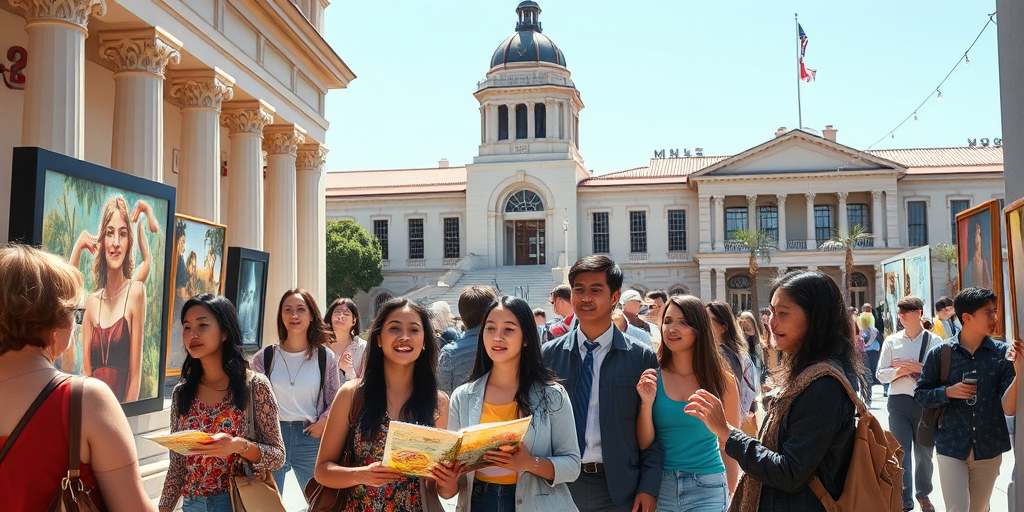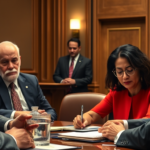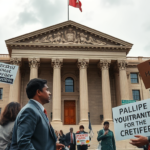**100 Years of Creative Visions: Mills College Art Museum Celebrates a Century of Diversity and Community**
Mills College Art Museum is marking its 100th anniversary with the exhibition “100 Years of Creative Visions,” a commemoration of the museum’s long-standing commitment to diversity and community through artistic expression. This showcase celebrates a century of diverse artistic communities and their profound impact on the museum’s enduring legacy.
**A Legacy of Artistic Diversity**
The exhibition, running until April 26, curates pivotal works from the museum’s permanent collection, highlighting the deep connections within creative communities and artistic friendships that have shaped its history. Among the standout pieces is Hung Liu’s “White Rice Bowl,” which elegantly captures her legacy as an influential Chinese immigrant artist. Liu’s role at the museum went beyond exhibiting art; her mentorship empowered women of color at Mills College, leaving an indelible mark on the institution.
“Hung Liu embodied what Mills stands for—uplifting voices and creativity often overlooked by mainstream art institutions,” recalls Sandra Ono, a former mentee. “Her work represents both a celebration and a reminder of the museum’s role in championing diversity.”
**Championing Asian and Latino Art**
From its inception, the museum has been a bastion for Asian and Asian American artists, thanks to founder Albert Bender. At a time when racial prejudice was rampant in the Bay Area, Bender supported these communities by collecting and exhibiting Chinese, Japanese, and Tibetan art. This commitment laid a foundation that has defined the museum’s mission for a century.
The museum registered another milestone when it became the second in the United States to acquire a work by Diego Rivera in 1926. Rivera’s piece catalyzed Mills College’s enduring affinity for Mexican and Latino artwork, now prominently featured in the exhibit’s “Mexican Modernists and Friends” section. Alma Lavenson, related to a Mills benefactor, played a key role by procuring Rivera’s painting, further illustrating the museum’s diverse artistic outreach.
Susan Ehrens, author and photographer, lauds Mills for its early embrace of modernist photography. “Mills’ support was crucial for groups like f/64,” Ehrens observes. “They took risks that opened new doors for photographic modernism.”
**Supporting Innovation and Social Justice**
Under the direction of Stephanie Hanor, the museum has flourished as an experimental space, empowering artists to pursue innovation without constraint. This ethos was vividly demonstrated in the 2024 exhibition, where Young Suh was encouraged to develop a complex series around desert landscapes, moving beyond his initial work on California fires.
“Working with Mills allowed me to push boundaries and engage creatively with incomplete ideas, evolving them into something more substantial,” Suh remarks on his experience.
The exhibition also features work by Oakland-based artist Weston Teruya. Through “Reshaping the Narrative: California Perspectives,” Teruya blends social justice themes with local art, addressing vital issues central to the surrounding community.
“Mills has always nurtured art that resonates profoundly with our community,” Teruya articulates. “It’s a space where stories of labor, inequality, and resilience are visually celebrated.”
**Impact on Local Communities**
For the residents of the Bay Area and beyond, Mills College Art Museum’s centennial celebration is more than just a reflection of its historical journey; it’s a testament to the transformative power of art to foster inclusive communities.
Local real estate agent Jose Martinez emphasizes the exhibit’s community significance. “Highlighting underrepresented voices honors our cultural heritage and attracts new visitors and artists to our city,” Martinez explains.
While the museum remains a cherished cultural landmark, this anniversary also highlights challenges it must navigate, such as sufficient funding amid economic pressures. Maintaining the balance between fostering innovation and ensuring fiscal sustainability is crucial for the institution’s future programs.
**Looking to the Future**
As Mills College Art Museum continues to explore new narrative angles and fosters inclusivity, its role as a cultural hub in the Bay Area endures. The centennial exhibit not only reflects on past successes but advocates for the ongoing need to support diverse voices in art.
Community members interested in exploring this pivotal exhibition can visit the museum for both guided and self-paced tours. This celebration is a call to action for residents to engage with art that mirrors their own diverse experiences and narratives. As the museum continues to champion cultural inclusivity, its legacy inspires generations to come and enriches the fabric of the Bay Area.
For more information or to plan a visit, residents can explore the museum’s official website or contact its administration directly. As Mills College Art Museum moves forward, its centennial embodiment of creativity stands as a beacon of pride for the community and a testament to the power of diversity in art.
**Engaging with the Local Community**
The Mills College Art Museum’s centennial exhibition reaffirms its standing as an integral part of the Bay Area’s cultural landscape. It engages not only with art enthusiasts but also residents who see the museum as a reflection of their own stories and struggles. In doing so, it offers a compelling narrative of artistic evolution and cultural diversity that continues to shape the community’s future.







